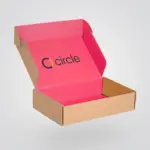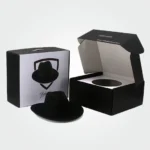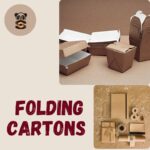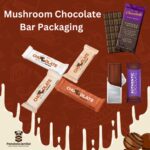How To Prepare Dielines For Prepress & Printing
The most important phase of any packaging job is printing, and one of the significant processes to get right from the start is the box die line. The die lines act as templates, ensuring that the finished designs meet the client’s expectations and quality standards for the packaging.
When it comes to custom packaging, prepress printing requires attention equal to that given to design. This is the most important part to creating the final appearance and tactile quality of the packaging. So getting this coding perfectly up and a standard procedure in place is imperative.
In this article, we shall guide you through the process of crafting dielines for pre-press correctly, but in case you need some time to comprehend a general idea, let us take this moment to understand.
What is a Dieline Template?
Dielines are required for the production of packaging, and can be created by a graphic designer, die cutter or printer. These vectors serve as templates for the final packaging in these files to accurately show where cuts, scores, and indentations are to be made in the die-cutting operation. Dielines are widely used across many types of packaging for consistently accurate designs.They typically include:
- Packaging size, scale and dimensions
- Location of visual elements
- Placement of creases, cutlines, tabs, folds, and other connection points
- Manufacturing notes
- Bleed requirements

Dielines are the blueprint for any kind of final packaging, and this by itself is sufficient in establishing the importance of the dielines. However, if you would like to know more about what a dieline means in packaging, we have a detailed explanation right here.
With the basics of dieline making at your disposal, let’s talk about the detailed sequence of dieline alignment for prepress and printing.
Key Factors to Consider Before Creating a Dieline
Many aspects require attention before creating packaging dielines.
Size
The first step is to go ahead and choose the appropriate size for your packaging. It should provide just a comfortable fit into which your product can be accommodated without any surplus room.
Dielines are usually printed on standard size sheets. It is therefore advisable not to use oversized packaging. An oversized one may not fit limits of the printer, making die-cutting difficult and expensive.
Weight
The weight of your product also needs to be considered. Heavier products may require thicker stock like corrugated cardboard to hold and protect products adequately, which affects the type of dieline you require.
The Purpose
Finally, the purpose of your packaging needs consideration as it will affect how your box dieline will look. So you have an e-commerce enterprise relying on product shipping and scaling products to grab attention at stores.
For instance, e-commerce businesses are likely to prefer thicker card stock such as corrugated paperboard in order to protect merchandise in transit. Packaging will eventually reach the customer’s location, so as an e-commerce business, one must put consideration into those additional or different flaps and tabs built into the dielines to account for cushion when constructed.
Conversely, retail will often package their lighter weight products in folding cartons, or rigid boxes, that may have a less complex or even a downright simplified die line in respect of flaps and tabs.
Discovering the interaction between your product and its container benefits designers in new ways to navigate creating custom dielines. But now that you have the details set, it’s time to translate that into a blueprint the printer and die-cutting machine can understand.
Creating A Dieline Template
When creating a box dieline, numerous technical details must be considered, making the process complex. Custom packaging companies or manufacturers usually make their own dieline templates so that you can be sure of the integrity of your packaging. This means you are free to concentrate more on placing or positioning your artwork and logos and their color accuracy for printing, unlike having to spend time making the die.
With interest in assisting you with this, a dieline template is offered at no charge for your use.
Use Adobe Illustrator to apply your artwork onto the dieline, which should be in vector format. The dieline will contain several colored lines, each corresponding to a specific instruction for the die-cut machine.
Understanding these lines is crucial when placing and positioning your artwork. While color standards may vary between companies, the ones outlined here follow the Panda Scientist standard for dielines. Let’s explore what each color and line represents.
Cutting Lines
Marked in black, cut lines are probably the most crucial part of your dieline. They communicate where to cut your dieline to construct your final packaging.
Crease Lines
Crease or fold lines are usually marked in red and communicate where to fold your packaging. The red dotted lines ensure ease of construction for your packaging once complete.
Bleed Lines
Bleed lines are marked in green, separating excess space from the space that will ultimately feature your artwork design. Bleed lines help prevent any obscuring of your artwork and ensure your packaging design remains how you planned it on your vector file!
All artwork should ‘bleed’ over into the next panel or onto the excess space beyond the cutting lines to prevent a white border from forming around the designer’s edge.
Safe Zone
The safe zone is marked as a green dotted line and indicates to the printer which areas are guaranteed to be seen on your custom-printed boxes. Safe zones help printers align, ensure printed artwork is placed correctly on the finished project, and account for any stock movement during printing.
Glue Tabs
Your glue tabs will be shown as green crisscrosses to indicate where glue needs to be placed in the construction of your packaging. Do note that some packaging structures, like auto-lock bottom boxes, do not require a glue tab as they are designed to work without glue or tape.
Prepress Workflow and Proper Artwork Design
We mentioned the prepress printing process before, but what exactly is prepress?
Prepress involves all the printing processes and procedures between designing the print layout and the final print. Follow the below prepress workflow to ensure the best accuracy and quality of your dieline designs.
- Dieline: DO NOT flatten/scale/resize dieline templates.
- Color: Artwork files need to be formatted for the CMYK colorspace. CMYK will provide the most accurate color results when transferring your designs from the computer to a printer. PMS color code must also be indicated along with a swatch.
- Artwork: When designing your artwork, ensure any artwork ‘bleeds’ into the bleed areas to prevent white spaces but have your main artwork and information within the borders to avoid cutoff. Also, ensure that any thin lines in your artwork are at least 0.25pt.
- Images: Embed any images you use and set the resolution to 300 DPI to avoid blur.
- Fonts: Place fonts last after all artwork, images, and color are complete. Ensure the text size is at least 6pts, and for black text, QR codes, or UPC barcodes, use 100% K value. Finally, convert all fonts to outlines. Outlining ensures the inclusion of your selected typeface and avoids issues of missing fonts. Select your text and find “Create Outlines” under the type menu to do this.
When submitting designs to Panda Scientist, we have provided a simple checklist to follow that will help you. But now that you’ve finished your dieline, it’s time to consider the printing method.
Choosing the Right Printing Method
As previously mentioned, dielines are printed on large sheets of your chosen material before being cut and assembled. When determining the size of your packaging, opting for an excessively large dieline may not be practical. It could struggle to maintain its shape after construction, and printing on sheets of that size may not be feasible.

Therefore, it is crucial to consider the minimum size your packaging requires to securely accommodate your product while ensuring the dieline remains within a reasonable size for printing.
Choosing the right print method depends highly on the vibrancy and complexity of your art. If your design is considered highly detailed and colorful, offset printing will be ideal, enabling the highest quality and sharpness, especially for text-based designs that demand easy readability.
Conversely, If you designed minimally and there was no extreme need for precision during the making of that design, you could consider digital printing for your packaging, which is a far better and cheaper option.
Getting Ready for Manufacturing
Once you finalize your dieline design and select your printing technique, it can be rather tempting to feel completely sure about your project and send it off for mass production. However, it is imperative that you conduct your own quality control checks on your packaging to make sure it will endure any conditions it may face before true mass production.
Work with your manufacturer to prototype your final design before mass production. This way, your packaging designer or manufacturer can alter your box dieline depending on any structural issues it may have faced during the quality control process.

Ordering a sample of your finished design will allow you to physically interact with your packaging and reposition and fix any errors in artwork design or text that may appear on your final package. Read more on why ordering samples is important for your packaging.
But once you have approved your prototype samples and made any necessary changes, that’s it! Your packaging dieline is ready for mass printing and production.
Final Thought
Creating packaging dielines can be daunting, which is why packaging design and structural engineering services are helpful! Panda Scientist has a lot of experience working with different businesses across industries on their packaging designs, and dielines are no exception. Hopefully, we’ve made preparing a packaging dieline for your project more manageable with the above information and checklist.
However, if you have questions or want to continue your journey into custom packaging further, contact one of Panda Scientist product specialists today!






